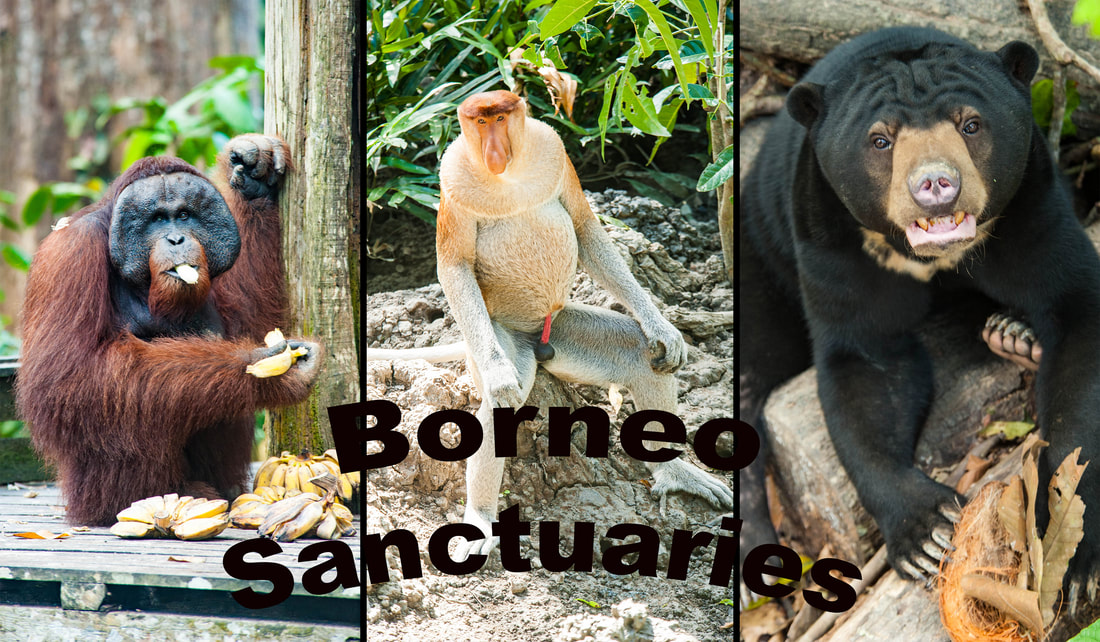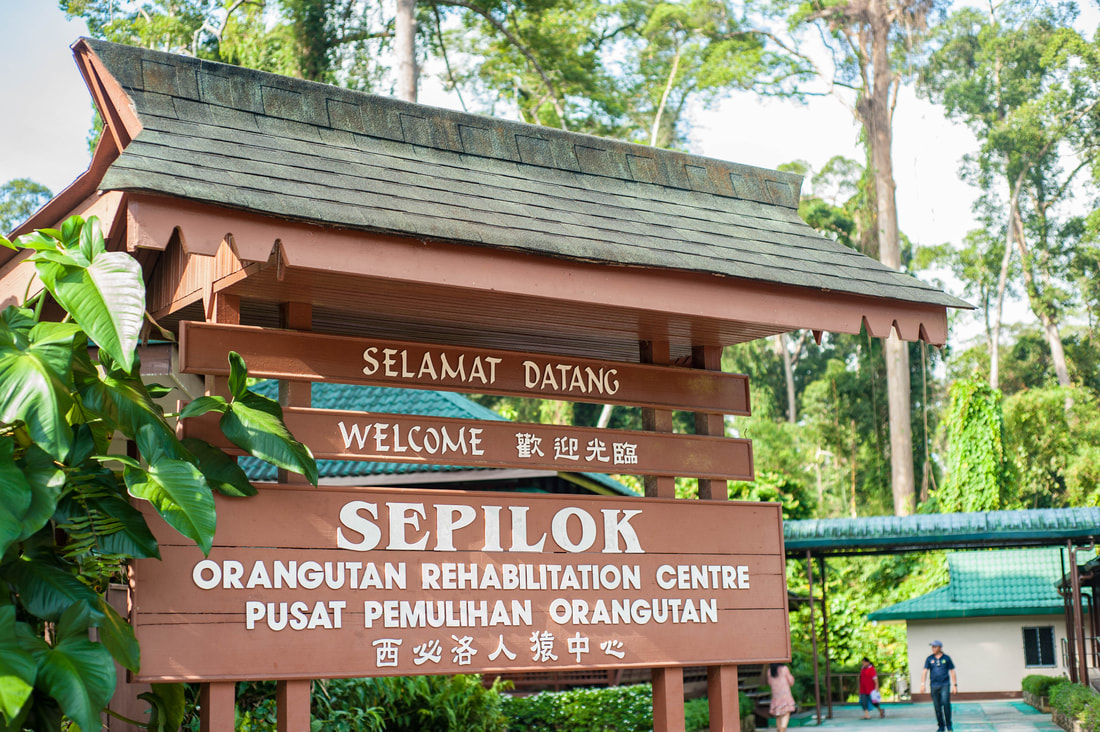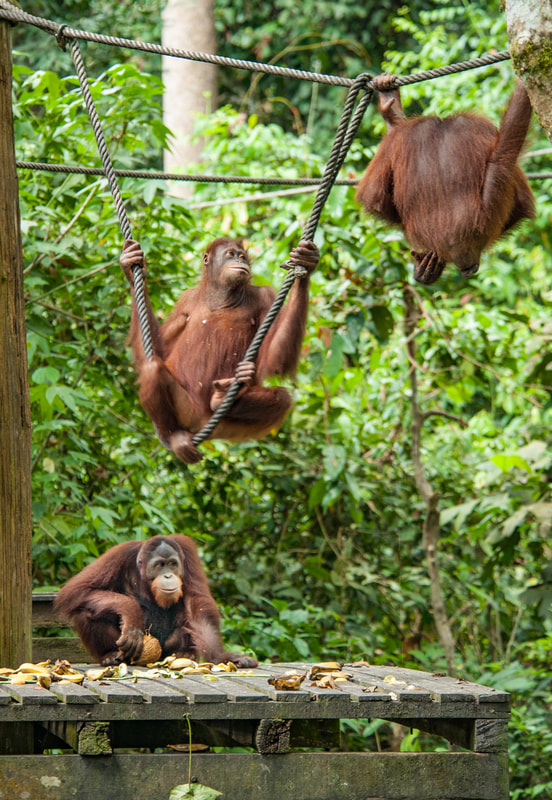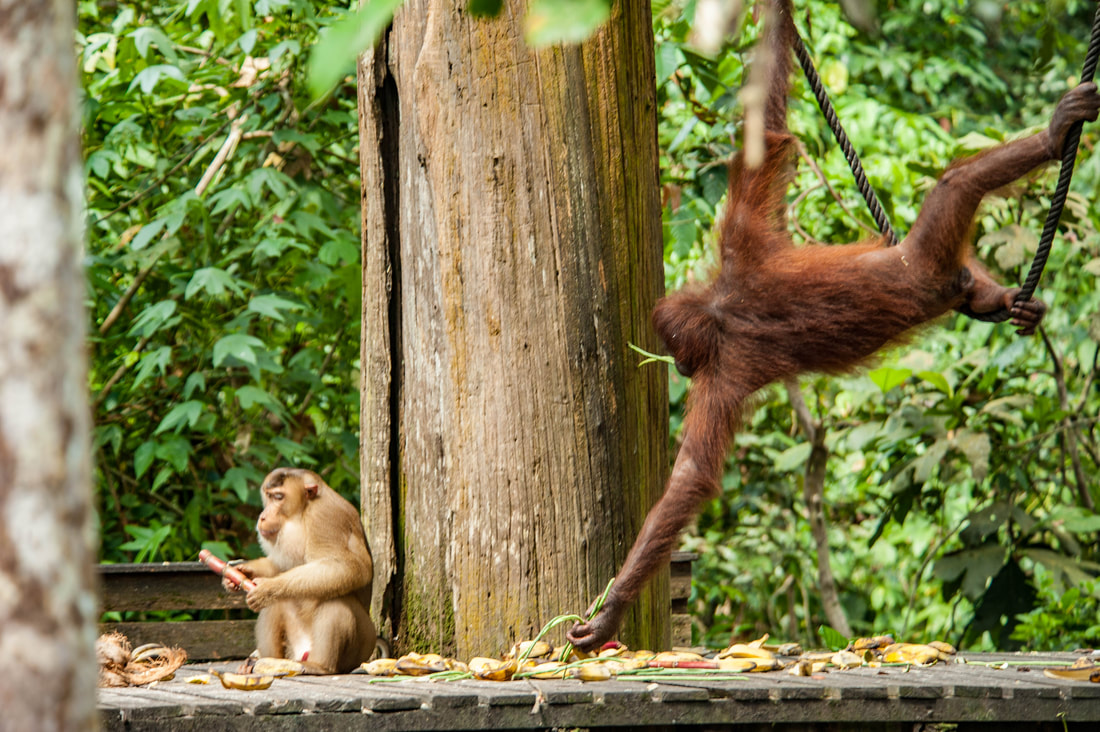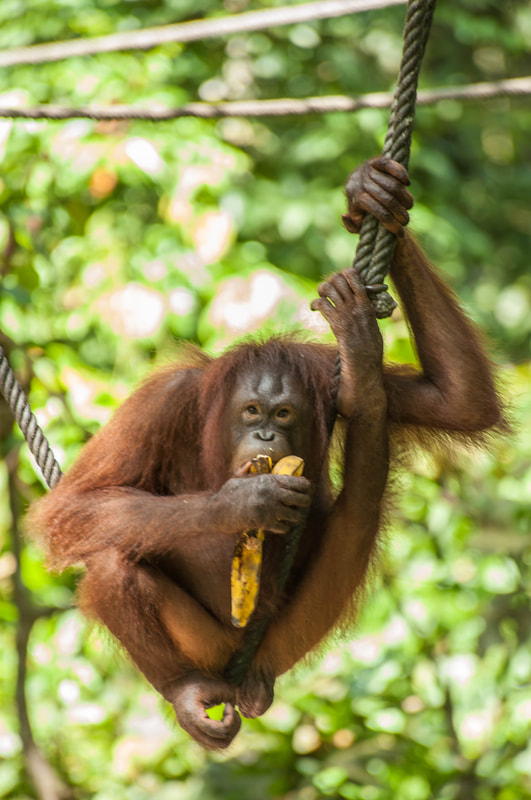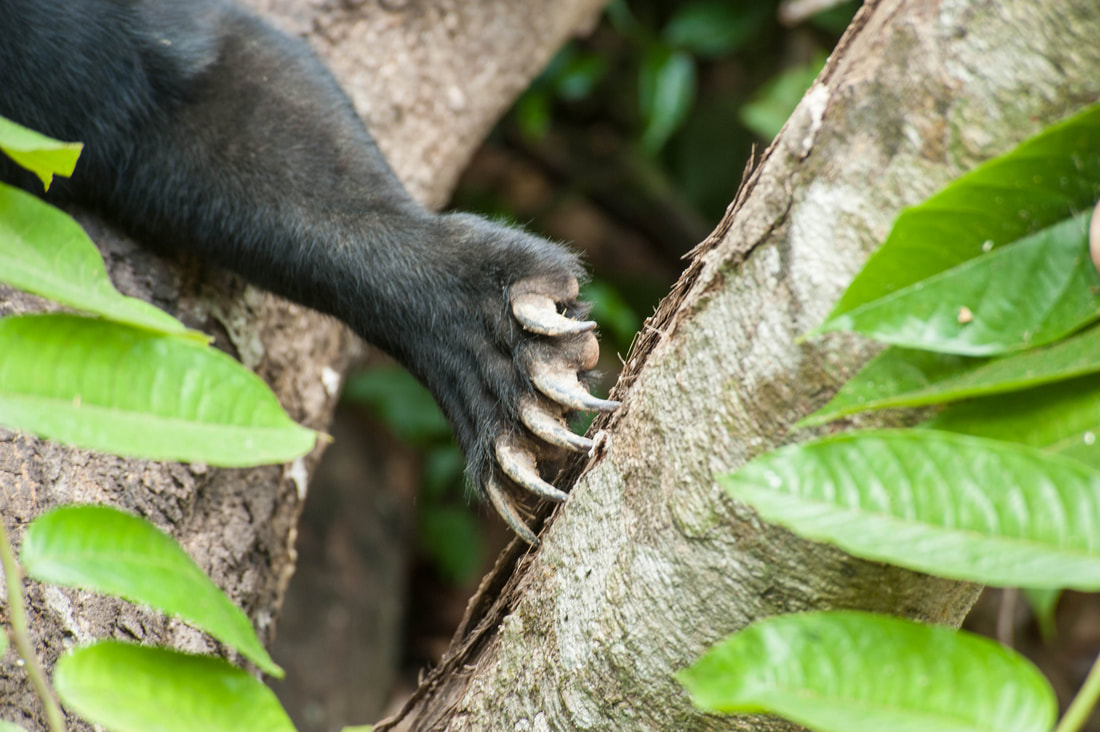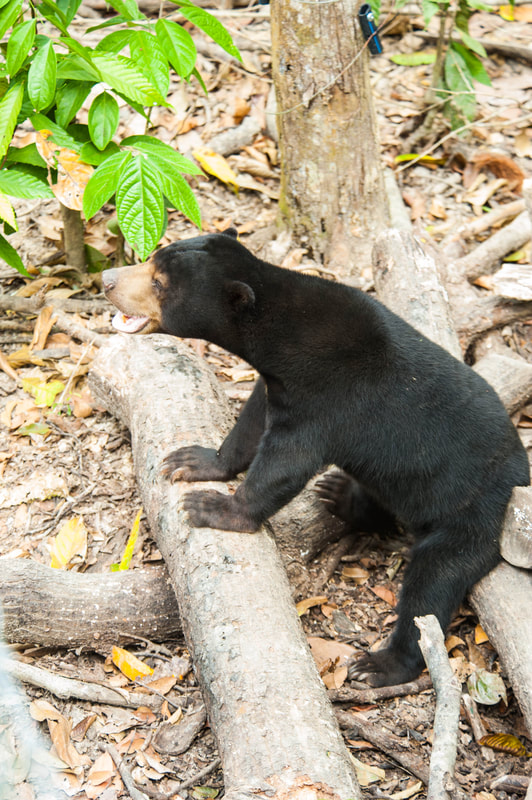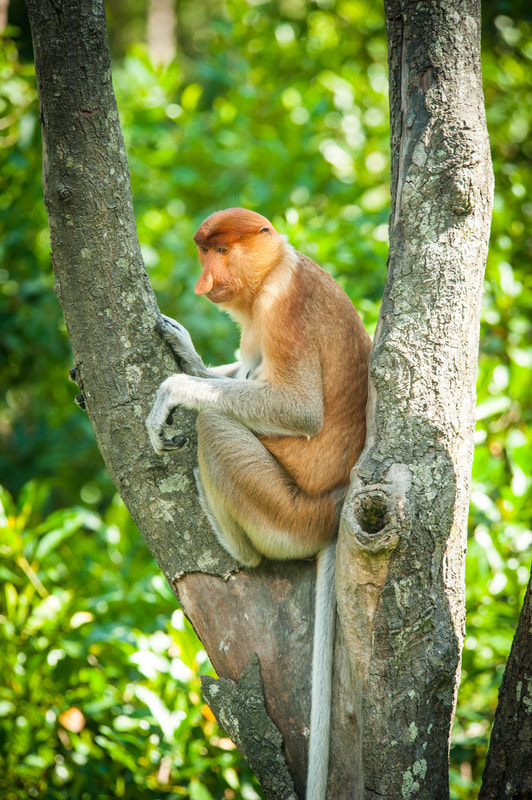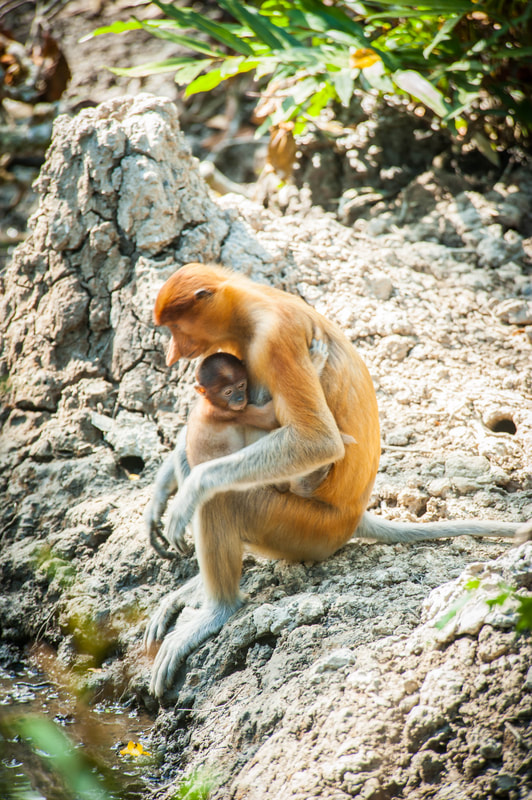|
I'm an animal stalker. I love going on treks. Long, hard adventures just to get a glimpse of an animal not in a cage. There is a special kind of magic to watch an animal in its natural habitat after you have just spent hours on foot with a tracker trying to find it. It might be from a distance with a pair of binoculars or surprising, right next to you. I've treked Gorillas, Rhinos, and Lemurs on foot. Followed Tigers, Cheetas, and Hyenas in Land Rovers all just to feel that magic. When I think back at what started these quests for me, it was the very first sanctuary I ever went to, The Daphne Sheldrick Elephant Orphanage in Kenya (now The David Sheldrick Wildlife Trust). Watching those orphaned elephants be cared for and loved by people whos only goal was to rehabilitate them and eventually attempt to release them back into the wild, left an indelible mark in my mind. Since then, the majority of my travels have been about animals and nature. So, of course, when I thought about Borneo, I thought "This is where I'm going to see the Orangutans.' Borneo is the third largest island in the world after Greenland and New Guinea. If you find yourself lucky enough to come here, you will find three incredible animal sanctuaries in the town of Sandakan in Sabah, Borneo. Sepilok Orangutan Rehabilitation Center, Bornean Sun Bear Conservation Center and Labuk Bay Proboscis Monkey Sanctuary. The last two I didn't even know existed before I came here. Sepilok Orangutan Rehabilitation Center is located in Sabbah, a Malaysian district in north Borneo. Sepilok was founded to rehabilitate orphaned orangutans and to return them to the wild and was built on 43 square kilometers of protected land at the edge of the Kabili Sepilok Forest Reserve. "The aim of Sepilok Orangutan Rehabilitation Centre is to return orphaned, injured or displaced orangutans back to the wild." SORC is open to the public for tourism purposes. It has twice a day feeding sessions [10 a.m. and 3 p.m.] where tourists can pay to enter and view orangutans feeding on a feeding platform adjacent to the center. There is an inclosed nursery and an outdoor feeding platform for the older Orangutans. There can be problems with tourists coming into too close contact with these trusting creatures. Because the orangutans are exposed to human visitors all day, every day, they lose their caution of humans and human areas like hotels that surround the center. They leave the sanctuary, roam through the neighboring resort areas, cross the streets into residential areas. Their natural habitat has become increasingly smaller due to slash and burn and the Palm Oil Industry. Because of their shrinking surroundings, they come into close contacts with humans more than they should. They can catch illnesses like the flu and diseases like TB. If an orangutan catches a disease like this they can never be rehabilitated and have to spend the rest of their lives in captivity. Many tourists will try to get as close to them as they possibly can to get that perfect selfie instead of giving them the 10-meter distance between them. Don't be that guy! The most fantastic resort to stay is for this experience is Sepilok Nature Resort. Just minutes from the Sun Bear and Orangutan Sanctuaries, this is a resort where "Nature" says everything you need to know about this tranquil oasis. Located directly across the street from the Sepilok Orangutan Sanctuary, Bornean Sun Bear Conservation Center is the only sun bear conservation center in the world. Sun Bears are the smallest bear species in the world The tropical lowlands of South East Asia are home to the bears. Sun bears don’t hibernate, they will build nests in trees to sleep in. This means that deforestation is a great threat to them and has drastically reduced the species. Things like illegal logging, conversion of forests to palm oil plantations and general plantation development all exacerbate this. They are also hunted mercilessly for meat and medicine. Their gall bladders are particularly sought after because of the bear bile industry. It contains high levels of ursodeoxycholic acid (UDCA) known to be useful for treating liver and gall bladder conditions. The extraction of bear bile from live bears causes unimaginable suffering and long term health problems for these physically and psychologically damaged animals. This sanctuary has the same concept as the orangutan sanctuary. They provide a loving, safe rehabilitation. Unfortunately for many of these bears, some of them are so traumatized, they can never be released back into their natural habitat. It would be a shame to leave Borneo without seeing the iconic proboscis monkeys. Guarantee your chances to spot these funny looking, pot-bellied creatures by visiting Labuk Bay Proboscis Monkey Sanctuary during feeding times (9.30AM, 11.30AM, 2.30PM, 4.30PM). The Labuk Bay Proboscis Monkey Sanctuary is a must-see in Sabah because the proboscis monkey is the only primate not seen in other parts of the world except for in Borneo. And they are becoming endangered – similar to the orangutan – due to deforestation which is threatening their existence in the wild. Labuk, located less than an hour from Sandakan. Set among a palm oil plantation (Boo!) The reason sanctuaries are needed in the first place. But..... A businessman from Kuala Lumpur bought 400 acres of mangrove forest and initially developed it into a palm oil plantation. But he had a change of heart when he saw proboscis monkeys scavenging for food on his estate. He learned how unique these monkeys were and stopped his plantation altogether. It’s very rare to hear land developers prioritizing conservation over commercial gain but this businessman did just that. Over the years, he focused his efforts on ensuring the proboscis monkeys do not lose their natural habitat.
0 Comments
|
AuthorI started this blog so that I could document and share my adventures in travel, photography, food and the things that inspired me. It's a work in progress as are most things in life. ArchivesCategories
All
|
